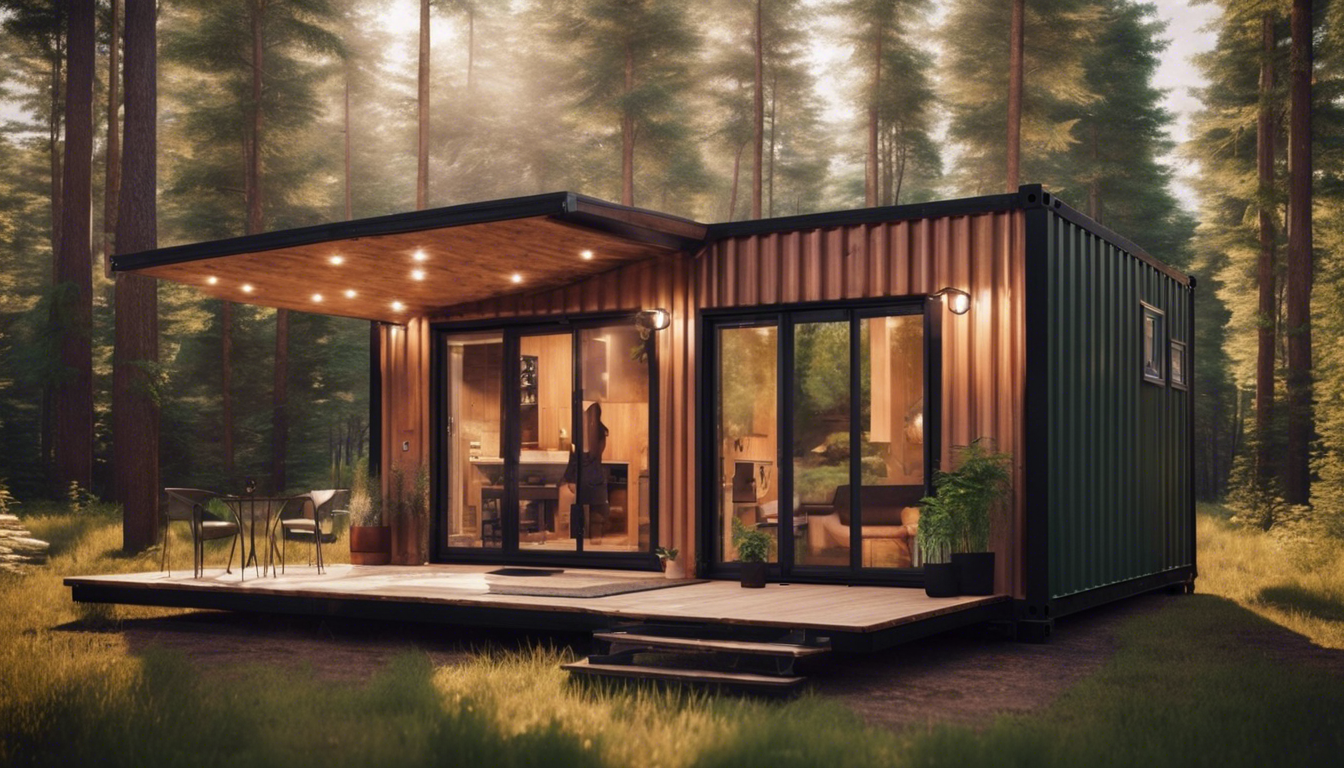Compact living solutions have gained popularity as people seek efficient and affordable housing options.
Two of the most discussed options are the 20 foot container home and the tiny house.
Both offer unique advantages and challenges.
In this article, we will explore each living solution in detail.
We will examine their features, costs, and help you determine which option best fits your needs.
Exploring Tiny Houses: Definition and Features
Tiny houses have gained popularity for their compact size and efficient use of space.
A tiny house typically measures 400 square feet or less and offers essential amenities in a minimalistic style.
On the other hand, a 20-foot container home, made from shipping containers, provides a similar compact living experience but uses industrial materials.
Both options promote a simple, clutter-free lifestyle and often include sustainable features such as solar panels and rainwater collection systems.
However, while tiny houses often resemble traditional homes, container homes can have a more modern aesthetic due to their industrial origins.
Understanding the differences between a 20-foot container home vs tiny house helps potential homeowners choose the best fit for their needs.
Comparison of Costs: Container Homes vs Tiny Houses
When comparing costs between a 20 foot container home and a tiny house, several factors must be considered.
A 20 foot container home typically costs between $10,000 and $30,000, depending on its condition and location.
This price includes the container itself along with basic modifications for living, such as insulation and plumbing.
In contrast, a tiny house can range from $20,000 to $80,000.
Tiny houses may feature more customized interiors and higher-end materials, contributing to their increased cost.
Additionally, land acquisition and utility installations can add to overall expenses for both options.
When deciding, individuals should evaluate their budget, desired features, and long-term goals.
Final Considerations for Choosing Between the Two
When deciding between a 20 foot container home and a tiny house, consider several factors.
First, evaluate your space needs.
A 20 foot container home offers approximately 160 square feet, while a tiny house typically provides more flexible layouts but varies in size.
Next, think about your budget.
Container homes often require less material cost but may incur additional expenses for modification and transportation.
Check your local zoning laws too, as regulations can differ for container homes and tiny houses.
Consider your lifestyle and preferences as well.
A container home can provide a modern aesthetic and durability, while a tiny house may offer a more traditional feel with customizable interiors.
Finally, think about the resale value.
Research the market to see which option holds value better in your area.
Frequently Asked Questions
What is a 20 foot container home?
A 20 foot container home is a living space built using a standard shipping container, typically 20 feet long, designed for efficient and compact living.
These homes are often modified with insulation, windows, and interior layouts to provide a comfortable living experience.
What distinguishes a tiny house from a container home?
A tiny house is generally a smaller dwelling that is constructed on a trailer or a permanent foundation, typically ranging from 100 to 400 square feet.
Unlike container homes, tiny houses can be built using traditional construction materials and techniques, offering more design flexibility.
How do the costs of building a 20 foot container home compare to that of a tiny house?
The costs can vary based on factors like location, materials, and customization options.
Generally, container homes can be more affordable initially due to the lower cost of the container itself, but additional modification costs may add up as well.
Tiny houses can also range in price, particularly with high-end finishes.
What are the primary factors to consider when choosing between a 20 foot container home and a tiny house?
Consider factors such as budget, intended use, local building regulations, climate, and personal design preferences.
Container homes may be more durable and require less maintenance over time, while tiny houses can offer more aesthetic flexibility and traditional living standards.
Are container homes or tiny houses better for sustainability?
Both container homes and tiny houses can be designed with sustainability in mind.
Container homes utilize repurposed materials, reducing waste, while tiny houses often require fewer new materials and promote minimalist living.
The sustainability of either choice ultimately depends on the designs, materials, and energy solutions implemented.




Leave a Reply